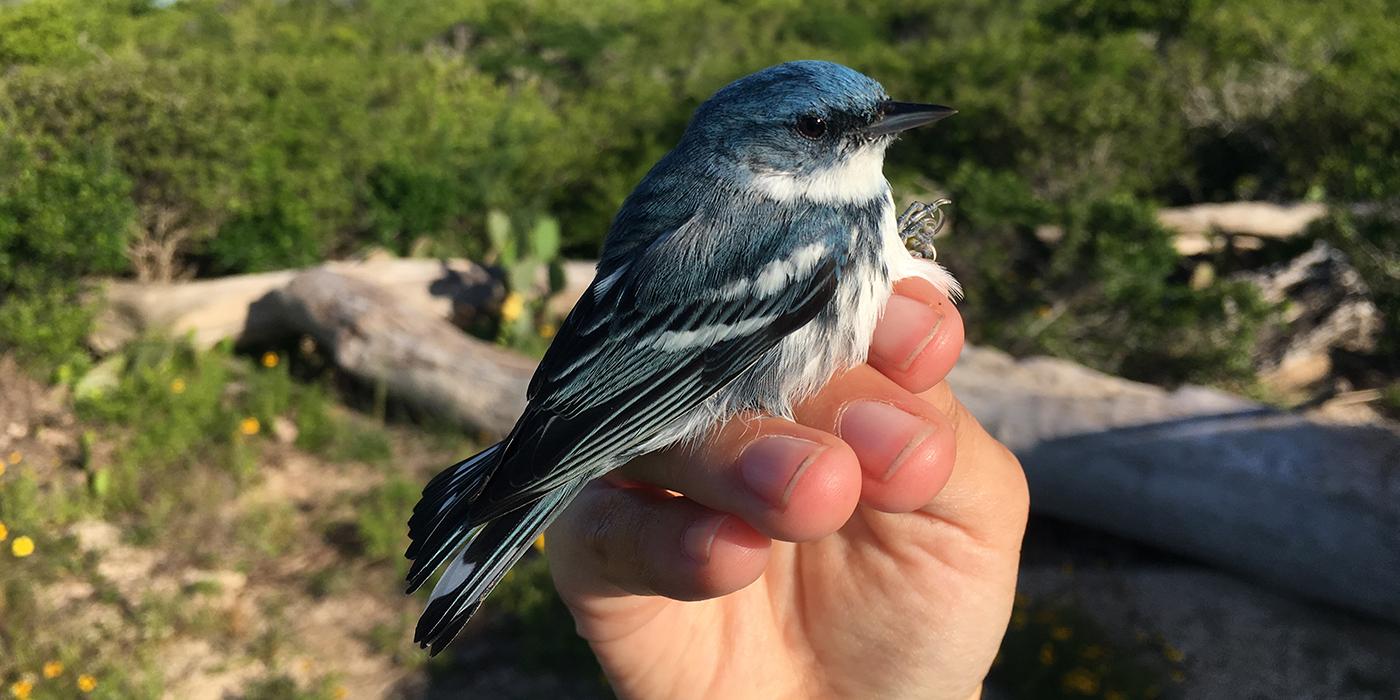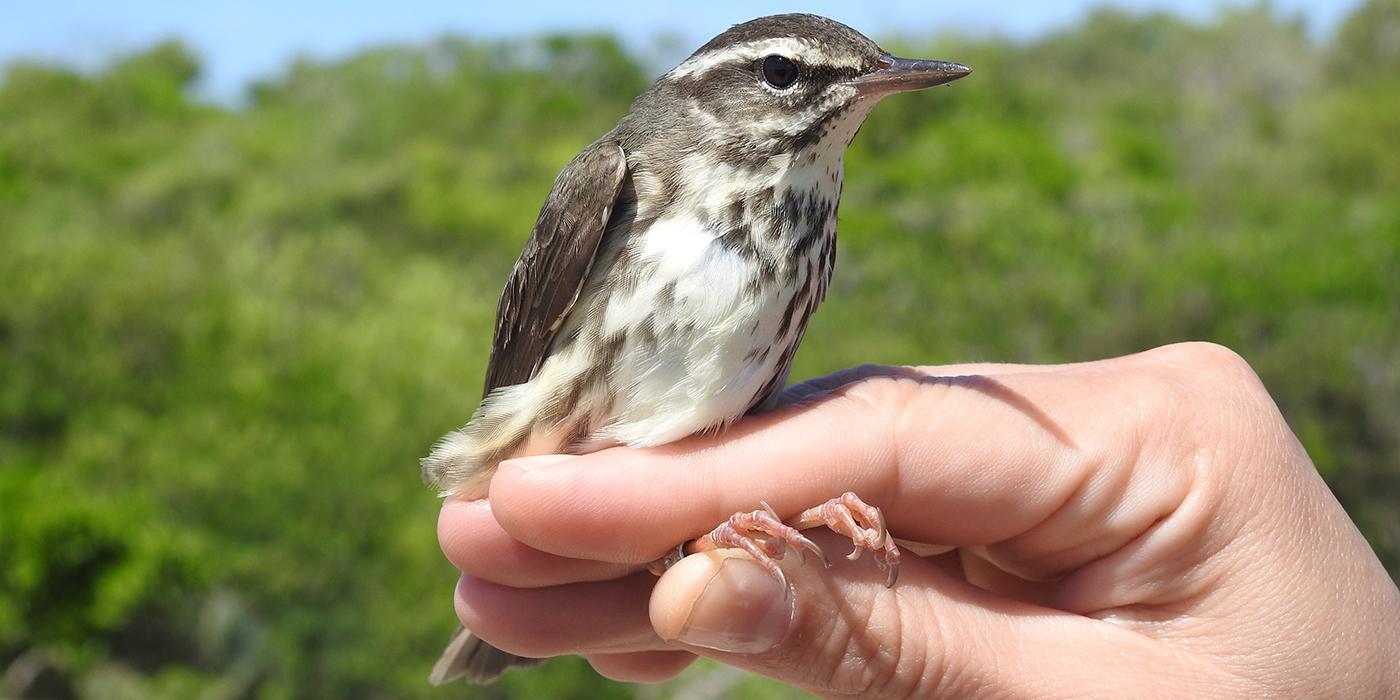Spring Migration on Mad Island, Texas Expedition Blog 2016
Mad Island: Last Blog
It's hard to know what to expect from the Texas coast in spring, and every year brings new surprises. Typically the second half of April is our "prime time" where we catch our largest numbers and diversity of birds. This year we were surprised to see those weeks come and go without any major arrivals of birds. We were even missing several species we expect to capture each year. And then when we thought that perhaps our busiest season was over, a strong north wind hit.
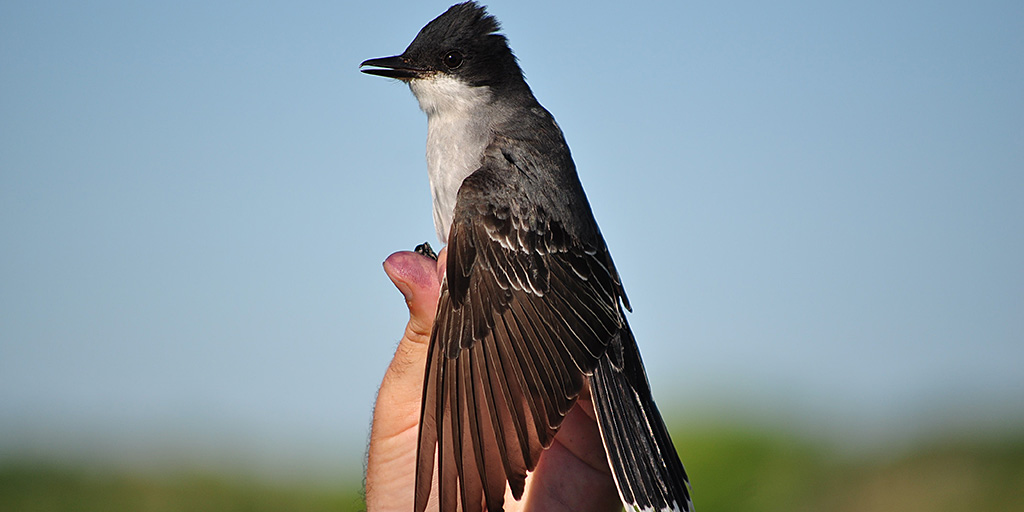
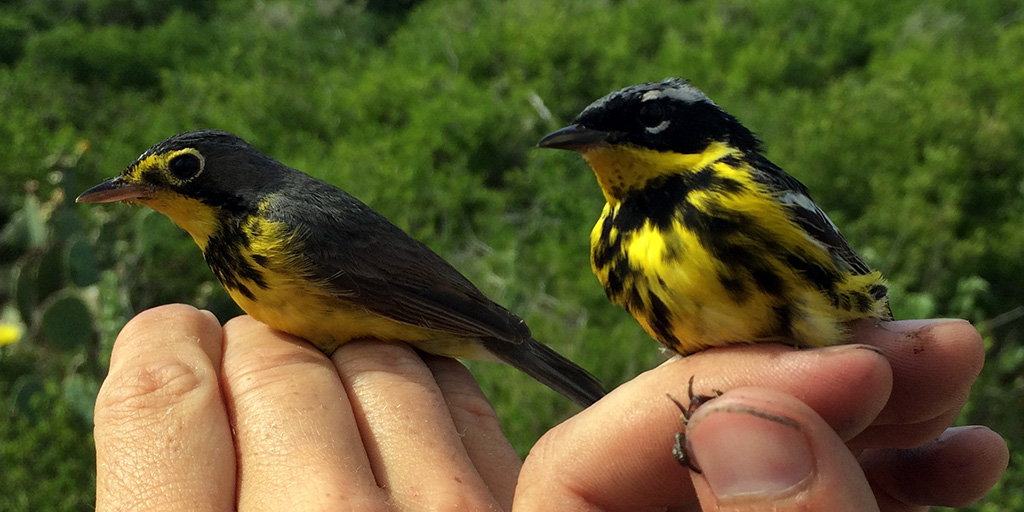
The front came on May 2nd and with 20mph winds it was too windy for banding, but as we watched we could see that a major arrival of birds was in progress. Throughout the day migrant passerines were coming down out of the low clouds and heading for the areas of trees and shrubs. The movement of shorebirds was also incredible. From the porch at the lodge we watched as flock after flock of shorebirds moved along the coast. Among these shorebird flocks were groups of hudsonian godwits and buff-breasted sandpipers, among the rarest of North American shorebirds.
Arriving at the banding station the next morning, we could see we were in for a busy day. Our hummingbird feeder, which is usually contested for by one or two individuals, was swarming with 15 or more ruby-throated hummingbirds throughout the day. The nets were similarly busy, with numbers of bay-breasted, chestnut-sided, and magnolia warblers. We also had lots of Swainson's and gray-cheeked thrushes, summer and scarlet tanagers, and rose-breasted grosbeaks. All in all we banded 170 birds of 32 species. We captured over 100 birds for the next three days in a row, an exciting but exhausting week as we banded a quarter of the seasons birds in just four days.
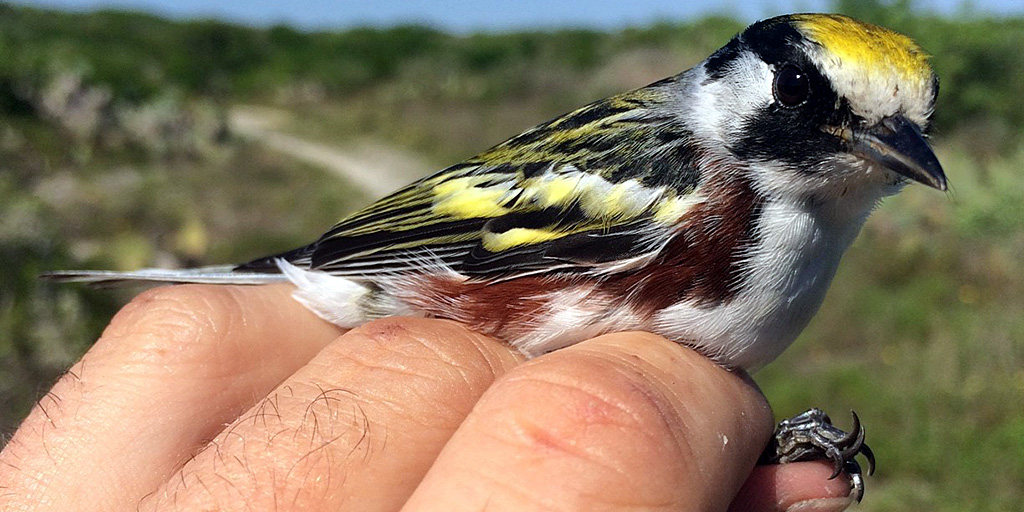
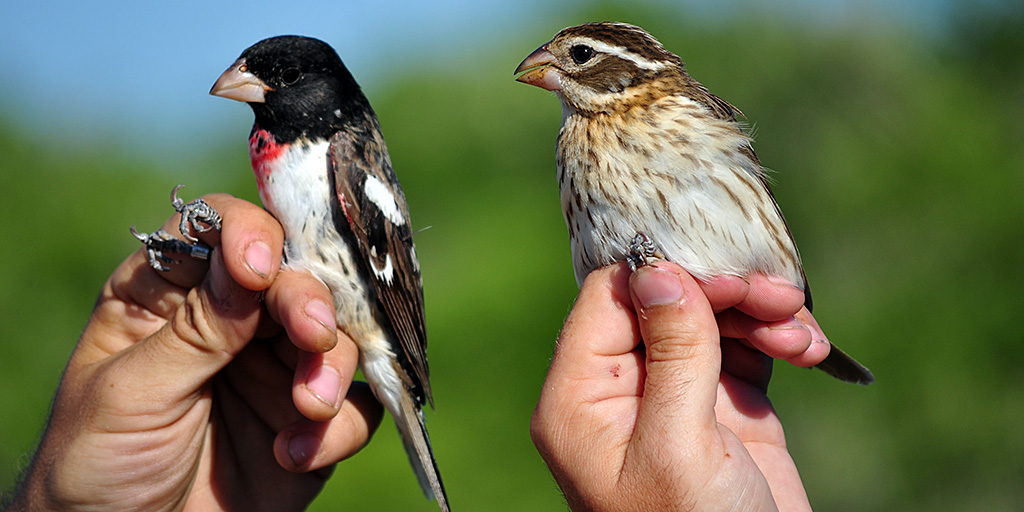
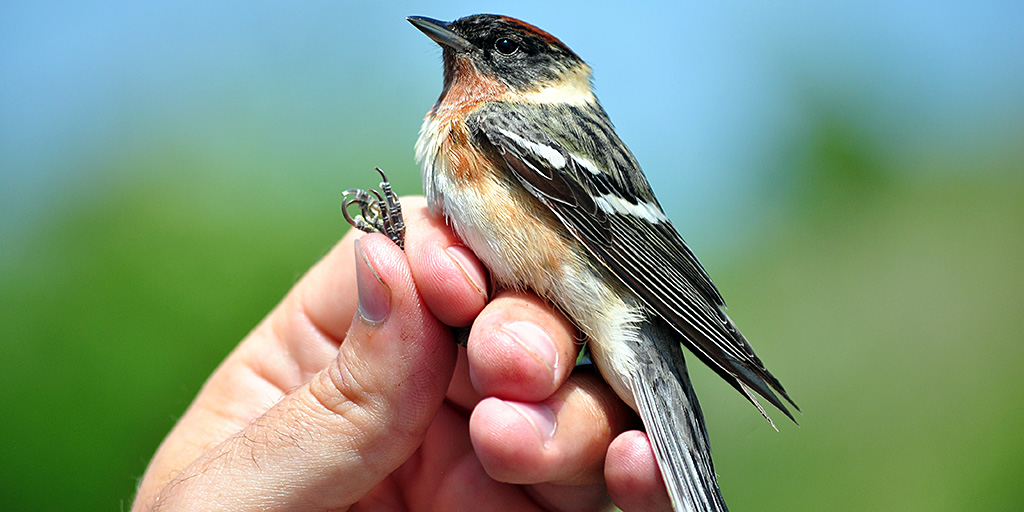
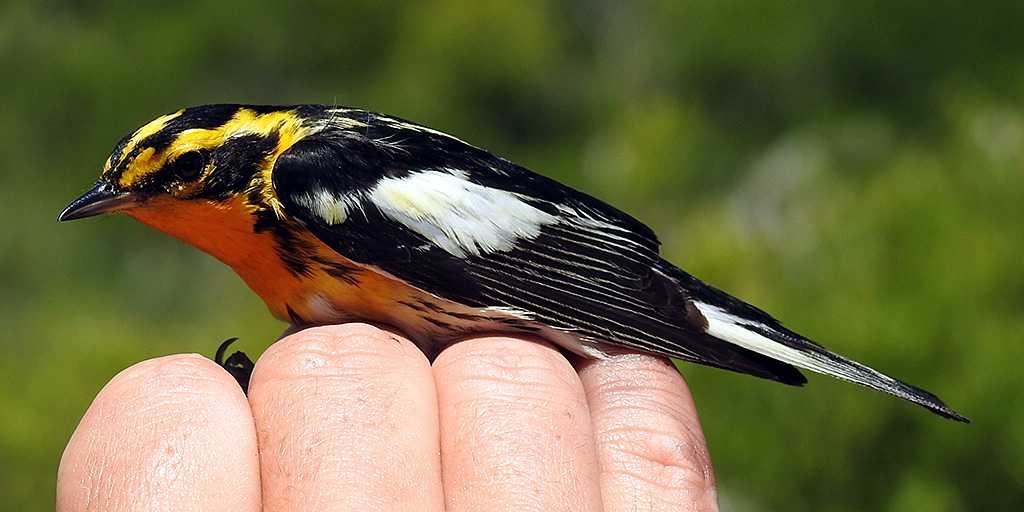
We banded birds until the last day, taking down some nets while we continued to check the others. The last bird of the season was a beautiful female bay-breasted warbler, a species we caught 16 of this year, doubling our previous high count. We also had new high counts of many species, including black-and-white warbler, common yellowthroat, hooded warbler, Kentucky warbler, and worm-eating warbler. Our season total was the second highest number of captures since we started running the station. We also added two new species to the site list: MacGillivray's warbler and buff-bellied hummingbird. The hummingbird is normally found in the Rio Grande valley and into Mexico, but does stray north along the gulf coast.
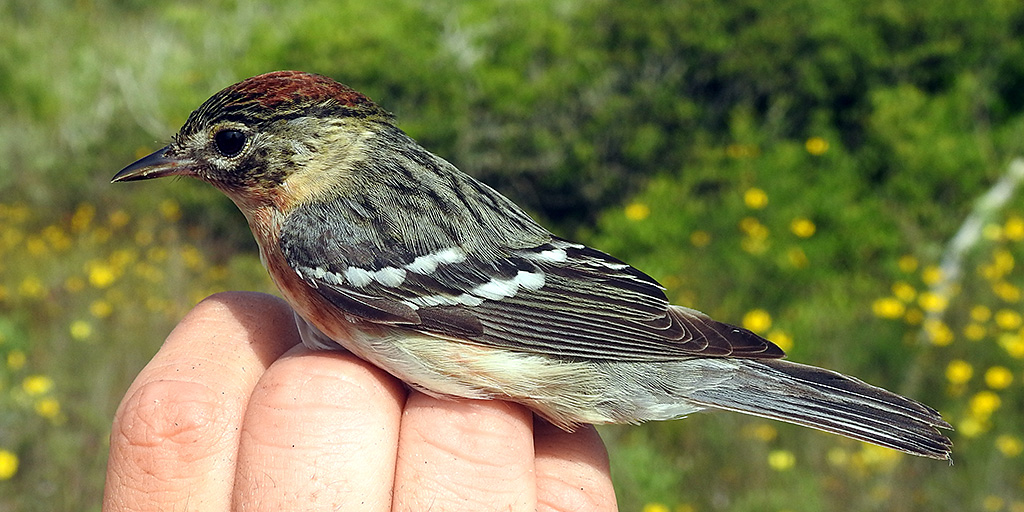
The heat rose as we took down the last of the nets, making it feel like summer, and time for us to move on. It has been another amazing season in an amazing place, and we look forward already to next year. Until we return we will leave the banding site with the painted buntings, singing incessantly from their territories in the scrub.
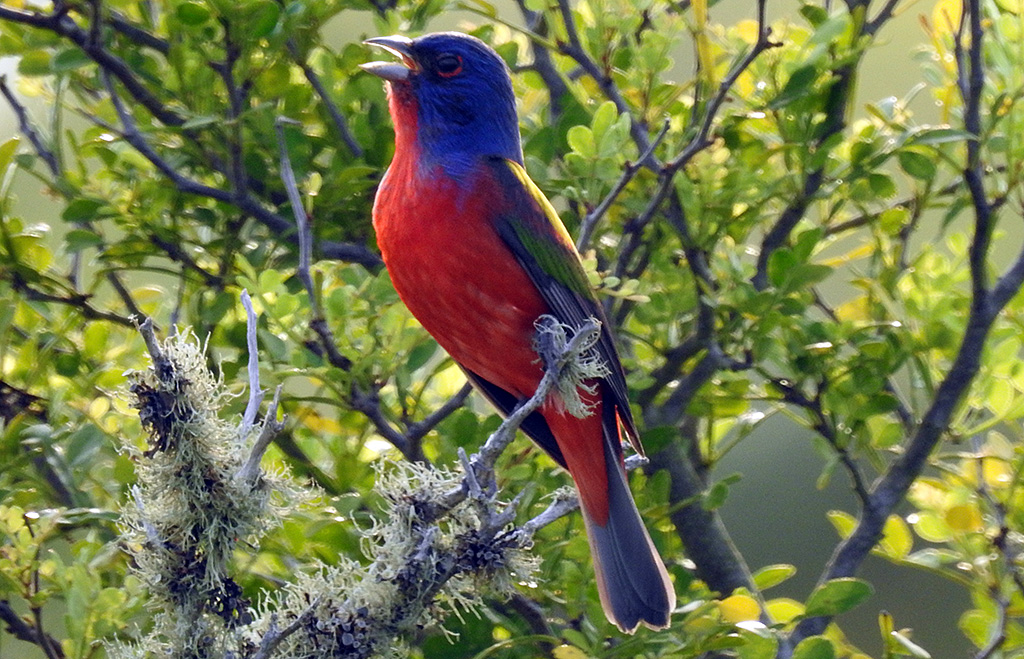
The Smithsonian Migratory Bird Center would like to thank The Nature Conservancy and Steven Goertz, for once again hosting us at the incredible Clive Runnells Family Mad Island Marsh Preserve. We would also like to thank the ConocoPhillips Charitable Investment Global Signature Program and Helen DuBois for supporting this important research on the Texas coast.
2016 Final Tally
| Number of Captures | 2193 |
|---|---|
| Number of Species Captured | 81 |
| Number of Ticks Collected | 170 |
| Species observed on the refuge: | 233 |
Peak Migration 2016, and a Mad Island First
The third and fourth weeks of April are the time of peak diversity and migrant abundance here at Clive Runnells Mad Island Marsh Preserve. This year's peak has been a bit slower than expected, with mostly hot south winds throughout. These winds carry migrants far inland and many will bypass our coastal station.
Still we have had several days of over 100 captures, and the diversity of species has been as spectacular as ever. The bulk of our captures have been species such as gray catbird and indigo bunting, which arrive annually in large flocks. Among these flocks we capture a colorful mix of orioles, grosbeaks, tanagers, and warblers.
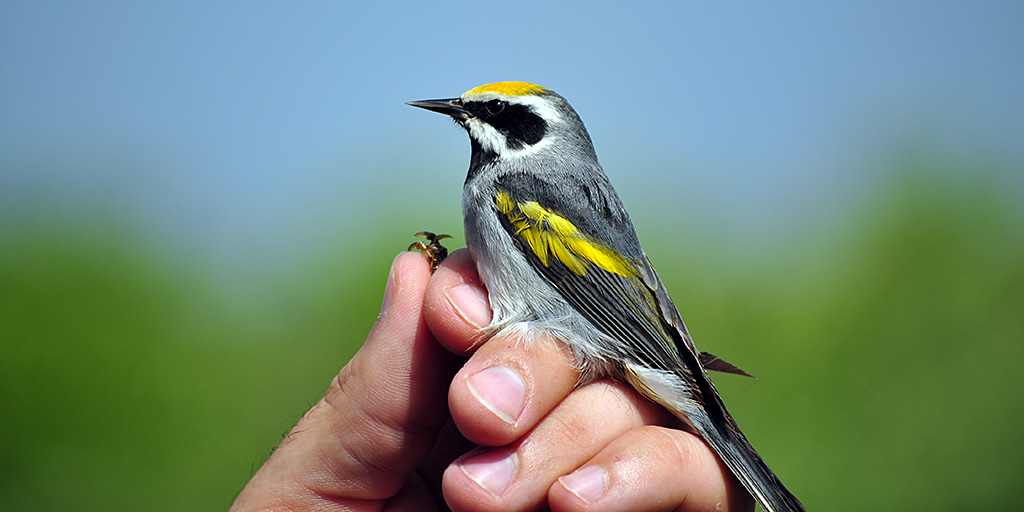
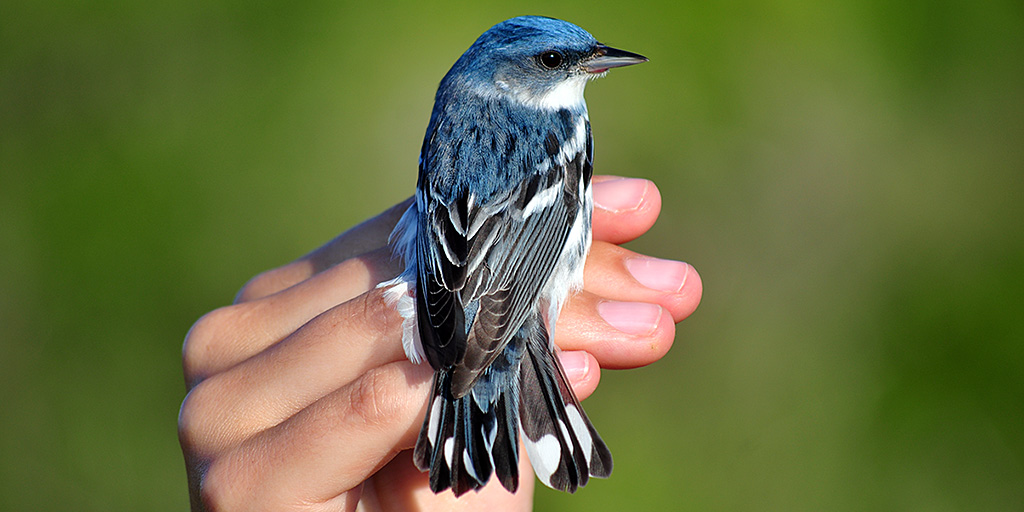

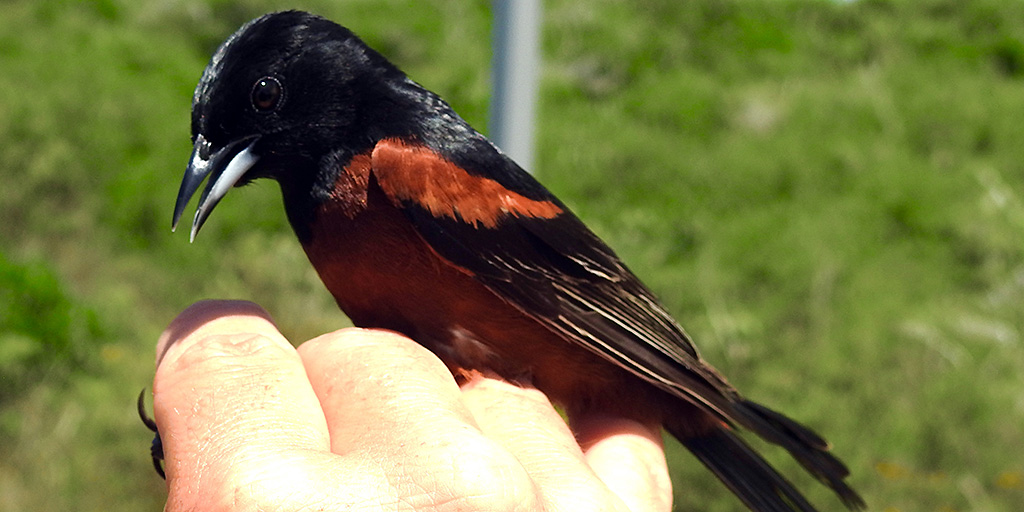
Warbler diversity alone during this time is especially amazing, with 25 species captured in the last few weeks. Among this variety of warblers have been some of the seasons avian highlights. We have captured rare and beautiful species such as cerulean and golden-winged warblers. We have also captured shy and reclusive species such as mourning warbler. A unique highlight this season was the first ever capture of a MacGillivray's warbler here at Mad Island. This western species is rarely encountered this far east, and is a first record for the preserve.
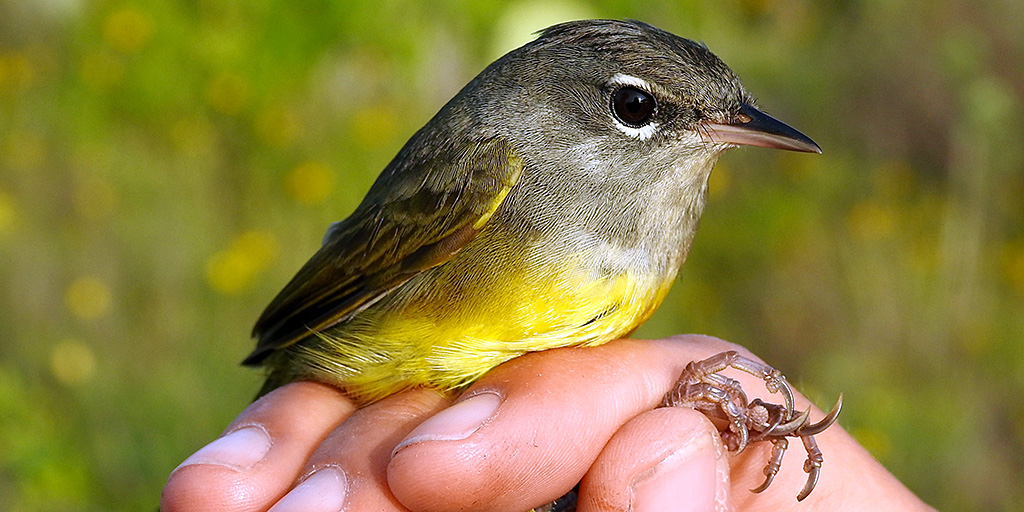
We are still awaiting the arrival of some of the later migrant species, and we have two weeks more here before the season ends. We await them with grosbeak-bitten fingers.
Running Tally
| Number of Captures | 1424 |
|---|---|
| Number of Species Captured | 68 |
| Number of Ticks Collected | 137 |
Mad Island: Not Quite Peak Migration
While still not the peak of the migration season, we have started to have "busy" days at our banding site. The highest number of captures in a day so far is 61 birds, but that was captured in only three hours before wind forced us to close nets! While high winds is always frustrating the breeze is part of the price we pay for banding in our beautiful shore-side habitat.
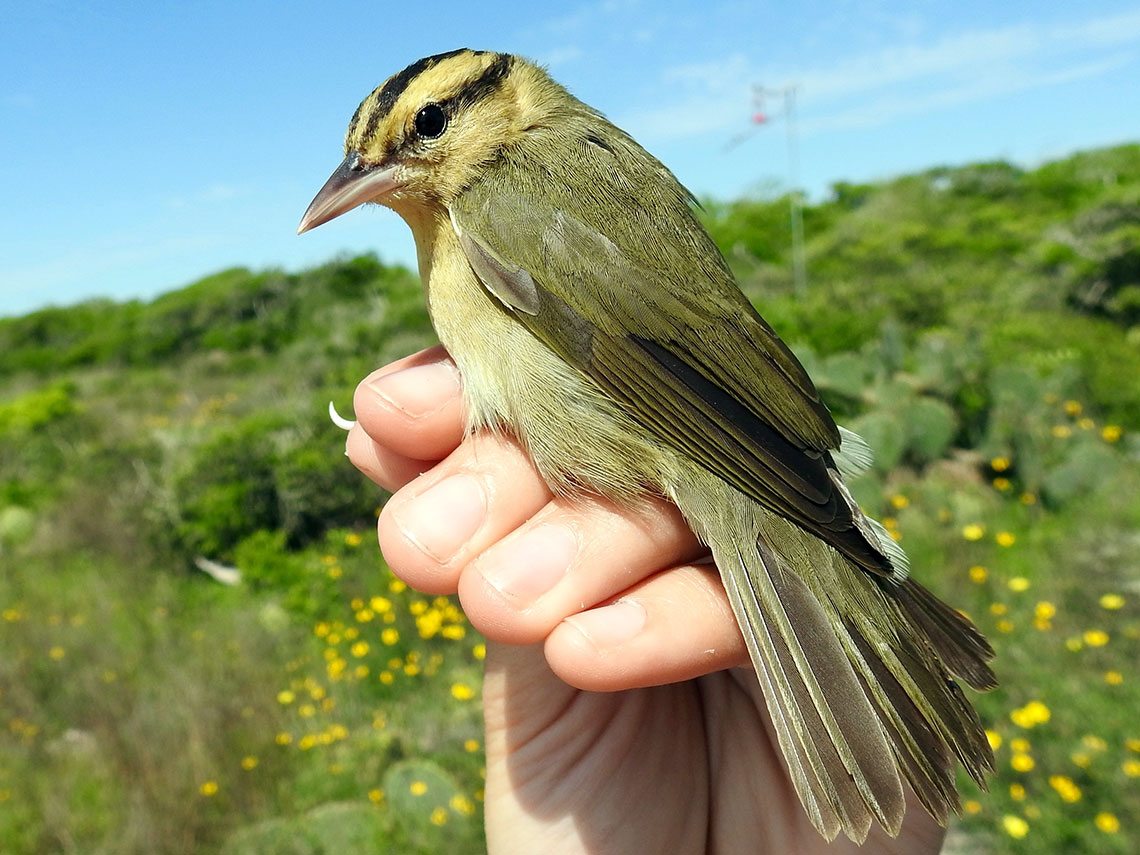
<
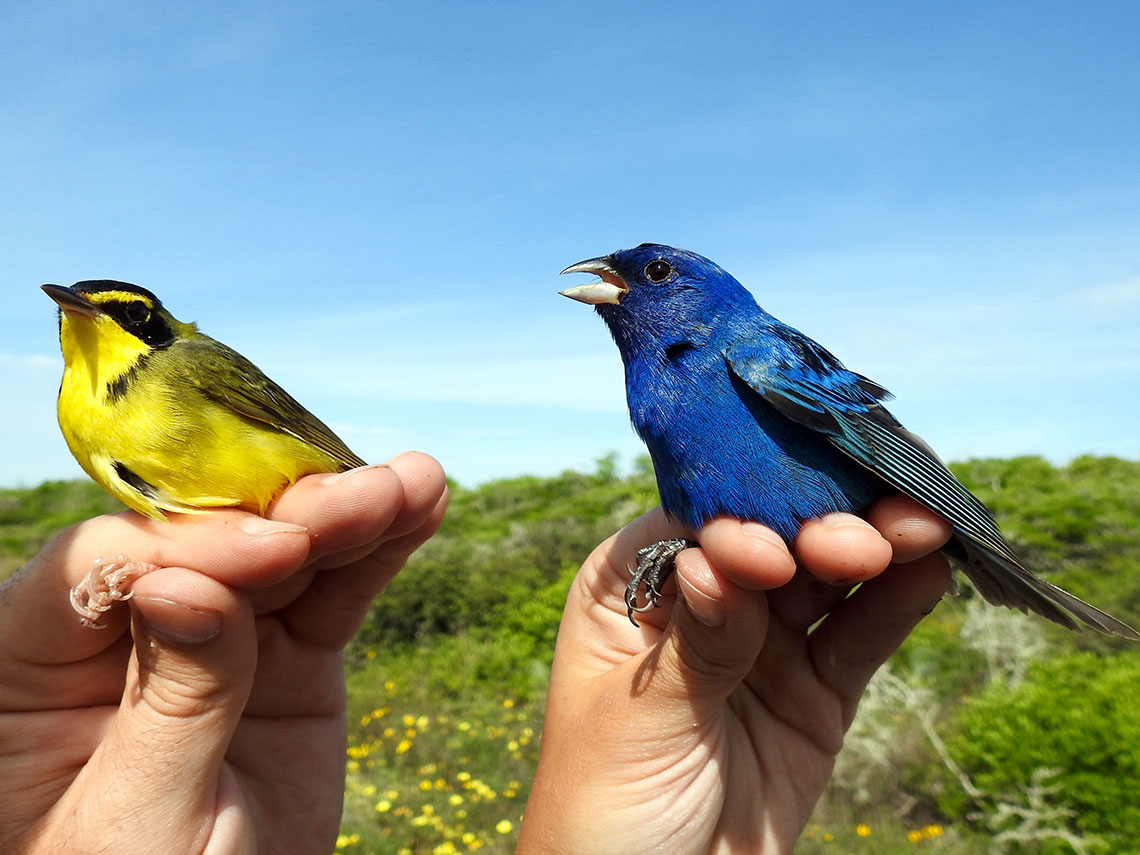
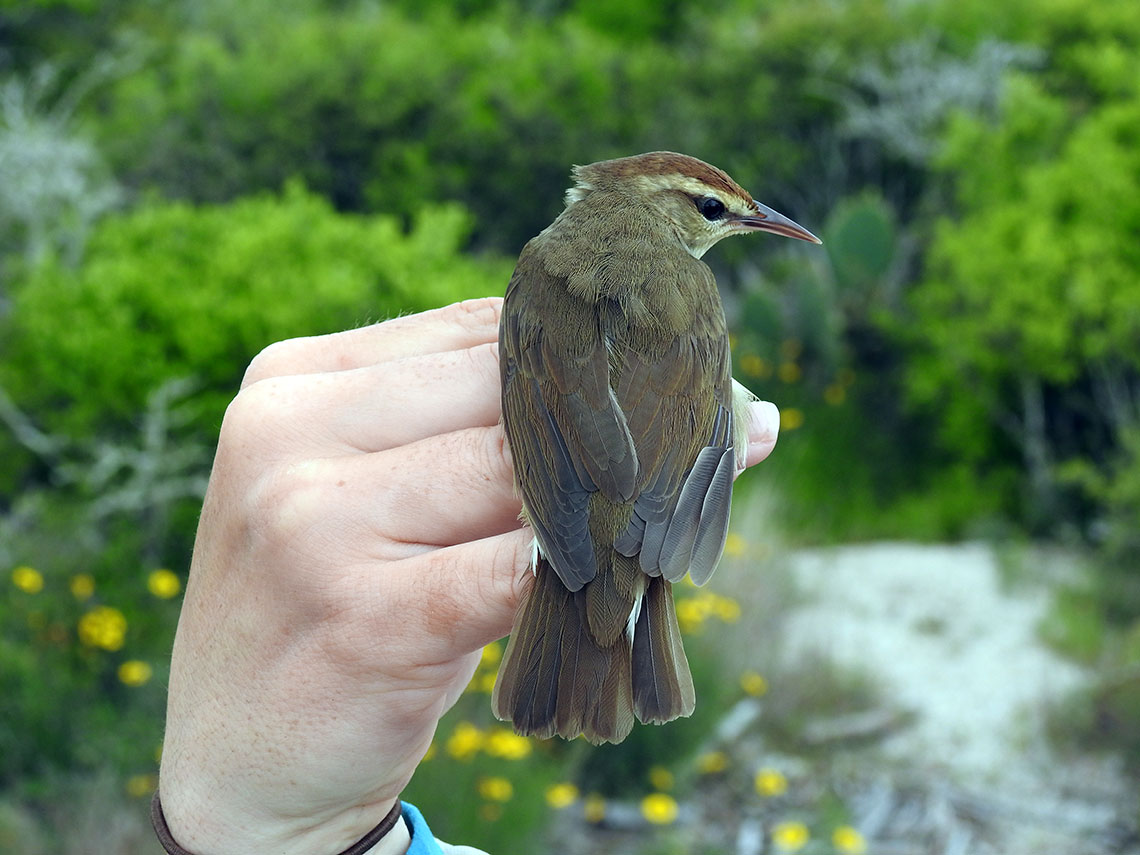
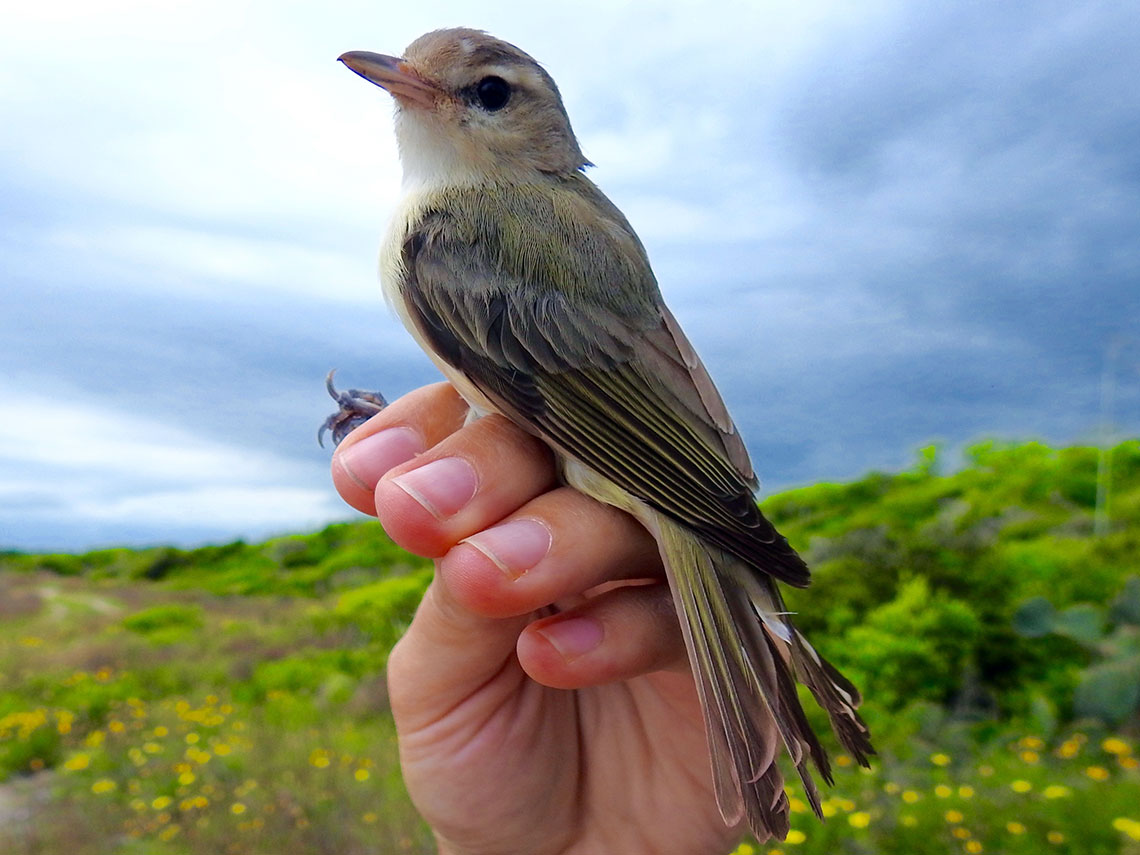
Early migrants, like hooded warblers, northern parula, and black-and-white warblers, have started to decrease in number and the majority of individuals we capture now are female, as males have headed north earlier to find the best breeding territory and start singing their hearts out.
New species we've been capturing this week include scarlet tanagers, orchard orioles, Swainson's warblers, American redstarts, ovenbirds, and Swainson's thrush.
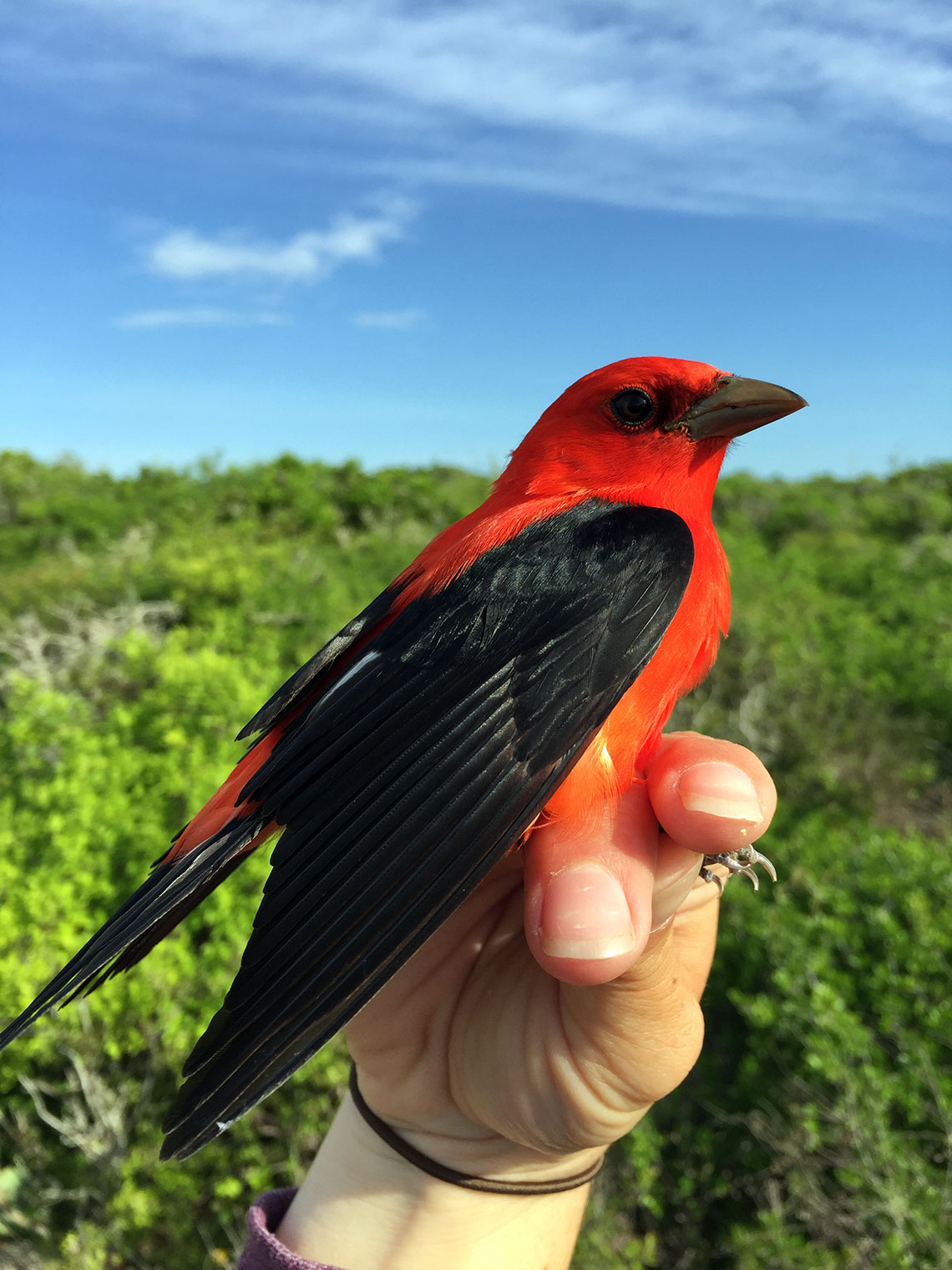
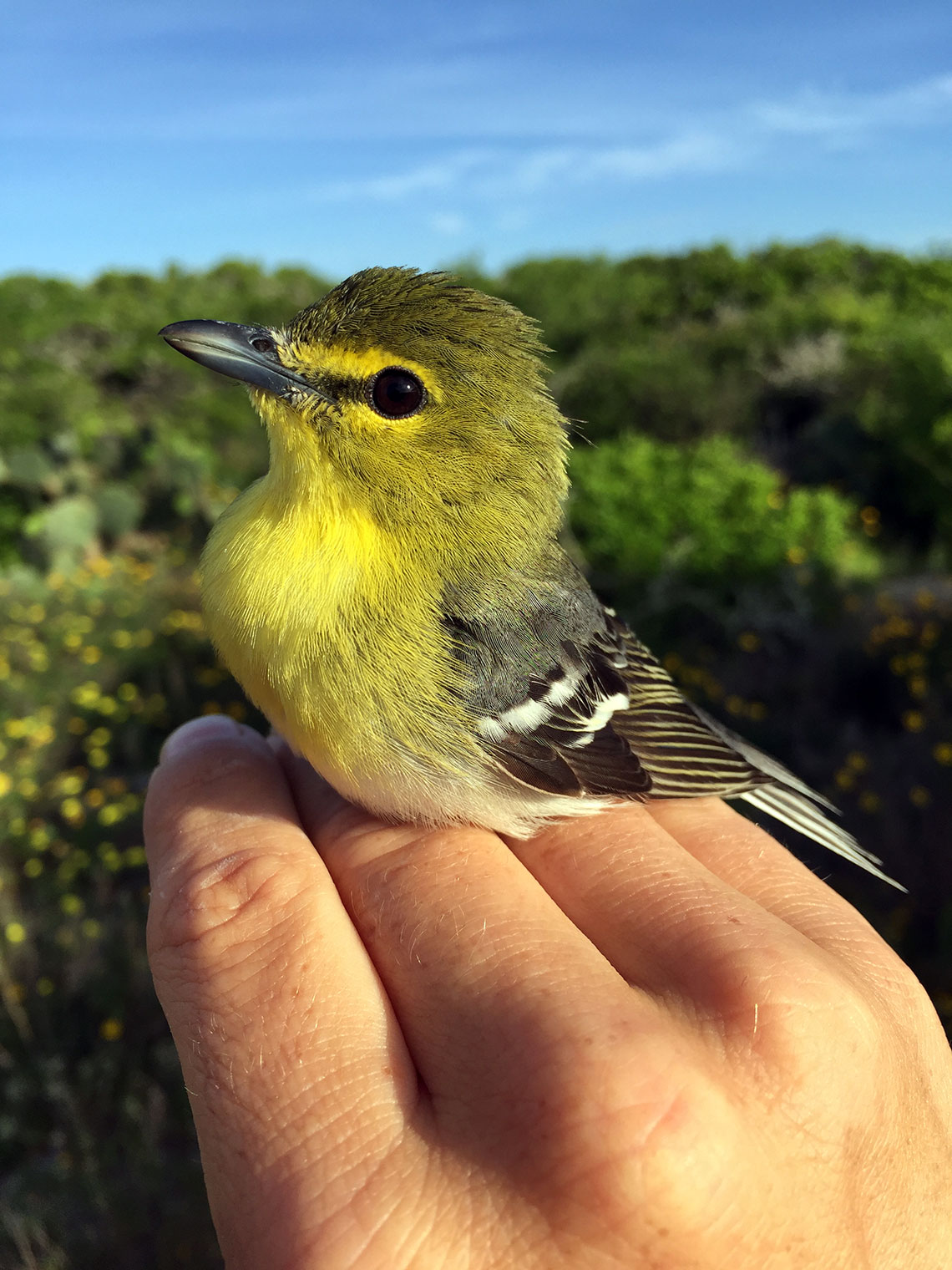
We're also catching more and more indigo buntings and gray catbirds, the two most abundant species captured at this site. The indigo buntings are beginning to be seen in flocks along the fences here. Dozens of bright blue birds fly from post to post as we drive the refuge roads. Also the mewing of catbirds is becoming a regular part of the soundscape.
Peak migration is right around the corner!
Running Tally
| Number of Captures | 697 |
|---|---|
| Number of Species Captured | 53 |
| Number of Ticks Collected | 107 |
| Number of Species Seen | 196 |
Migration Picks Up At Mad Island
Spring migration is starting to pick up here at Mad Island. With the second week of banding, we've started seeing quite a few new species in our nets and on the preserve. Peak migration is still a couple weeks away, but diversity and capture rate are steadily increasing.
New arrivals this week included: Nashville warbler, indigo and painted buntings, black-throated green warbler, blue-winged warbler, worm-eating warbler, wood thrush, and a yellow-bellied sapsucker.
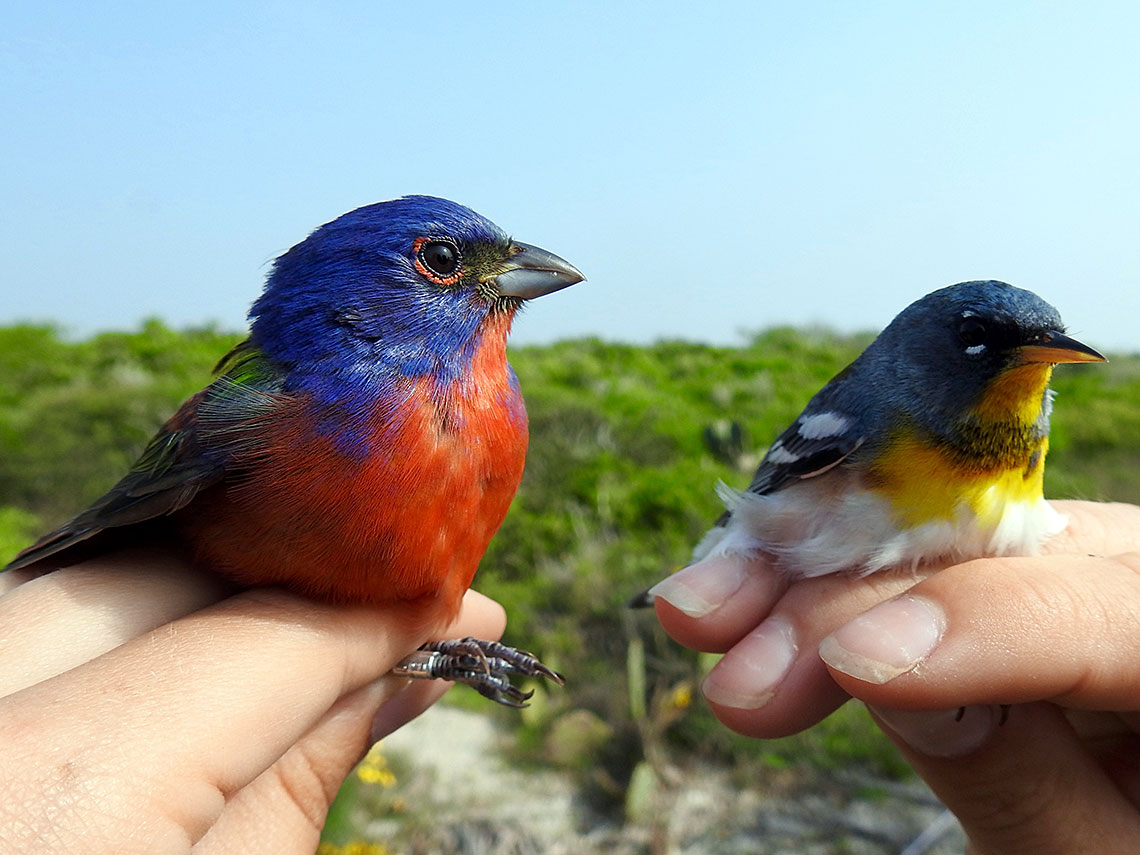
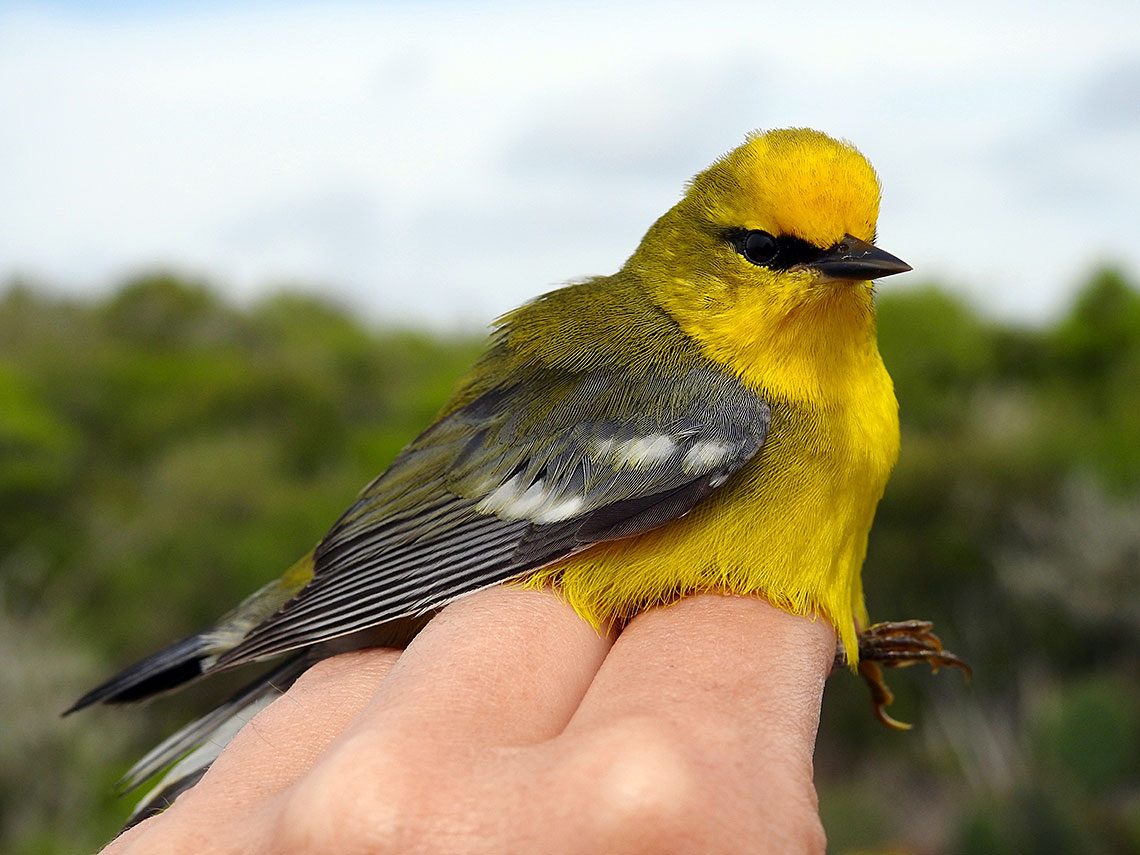
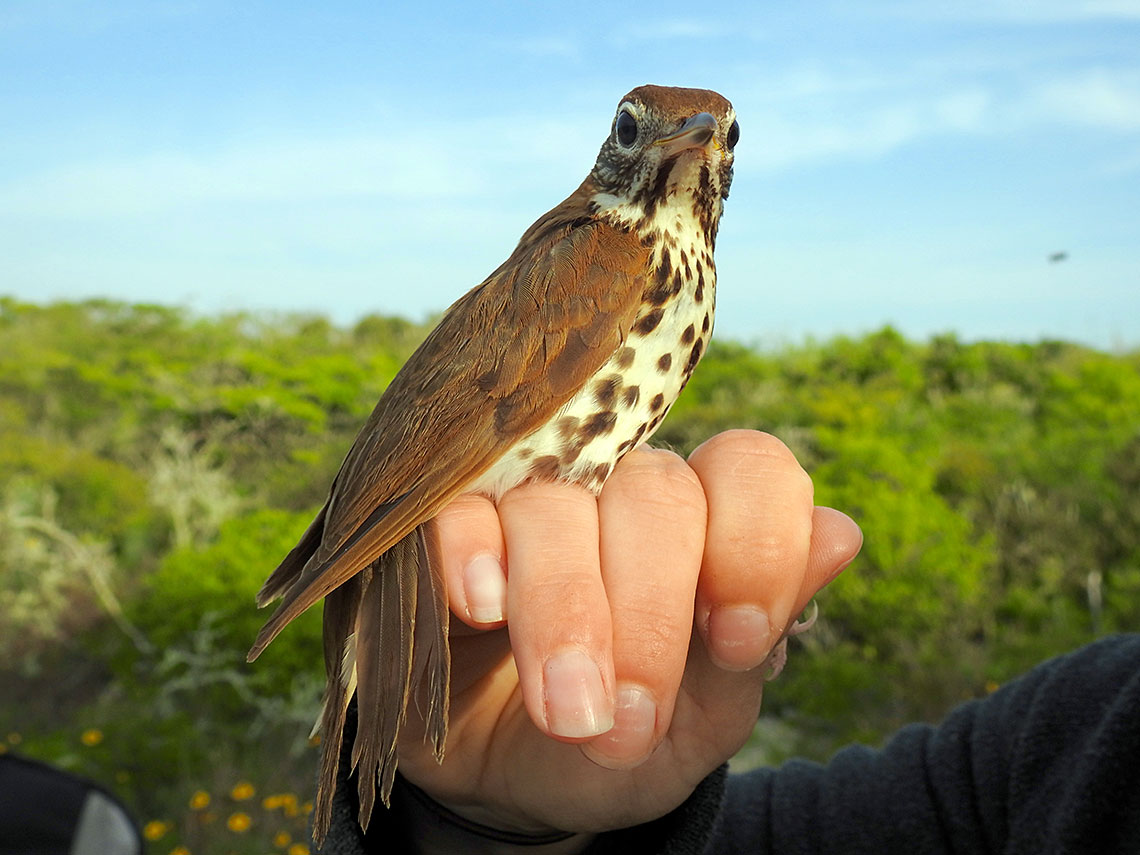
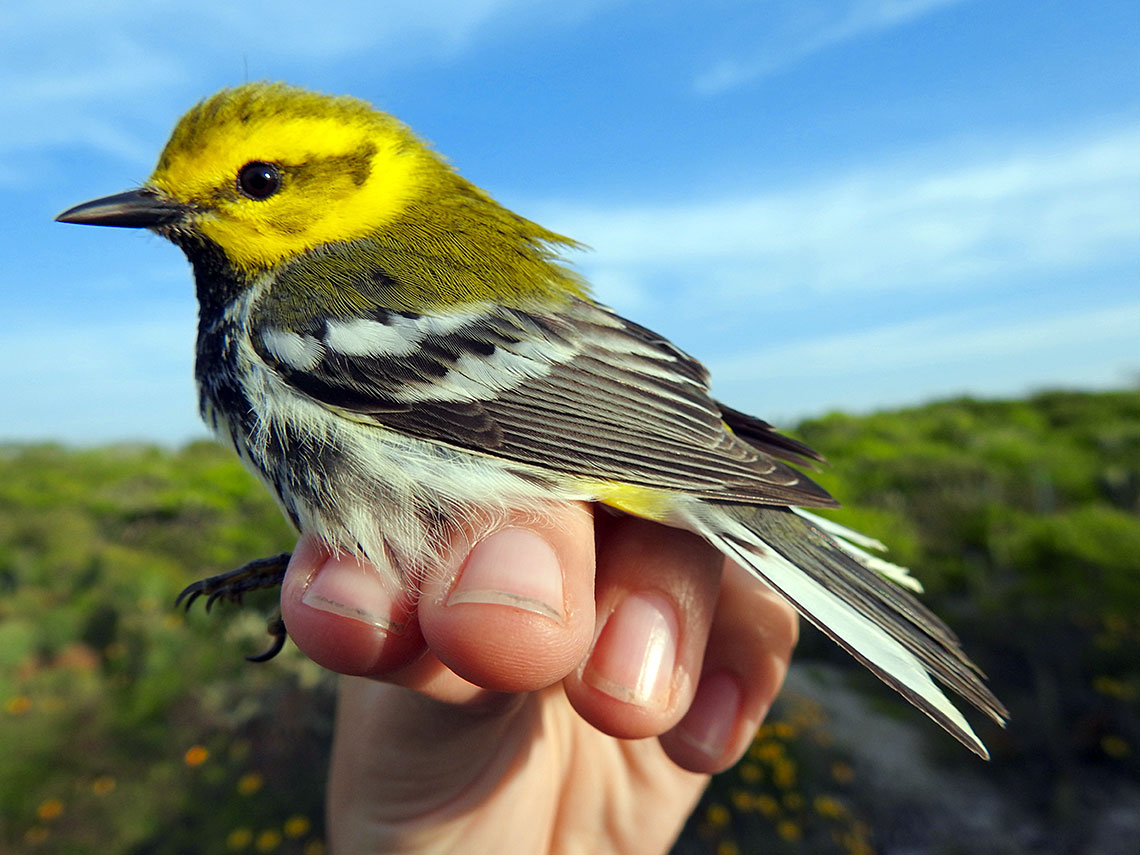
Signs of spring are everywhere here at the preserve. The eastern meadowlarks and mourning doves seem to be all paired off and the white-eyed vireos, northern cardinals, and mockingbirds are constantly heard singing throughout the banding site.
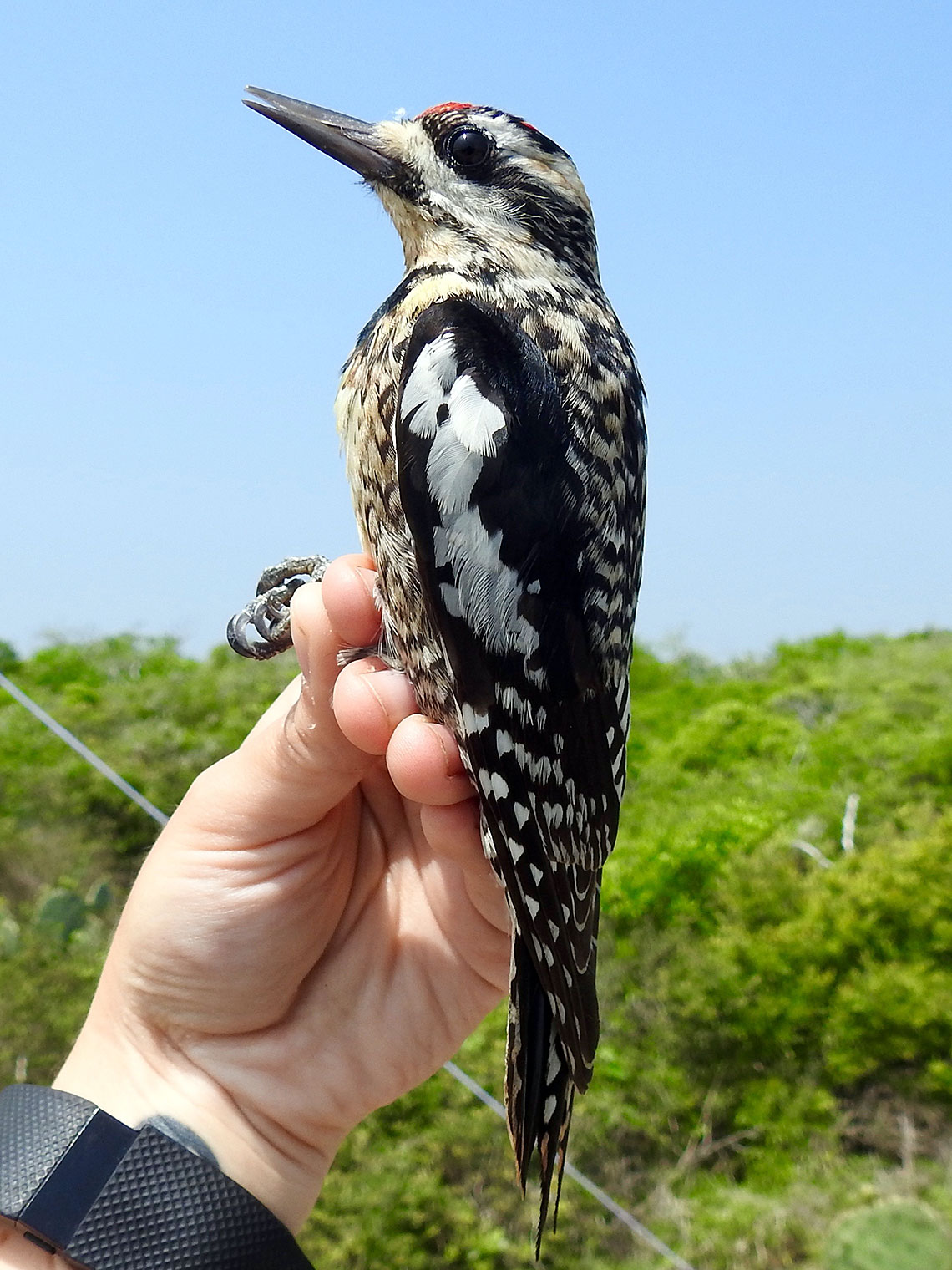
Another spring highlight is the return of the scissor-tailed flycatchers. These amazing birds sport a tail longer than their body, and have their flanks and underwings tinged a shade of peach pink rarely seen in nature. Just in the last week these birds are back in force, with nearly every mesquite bush and fence post boasting a scissor-tailed flycatcher.
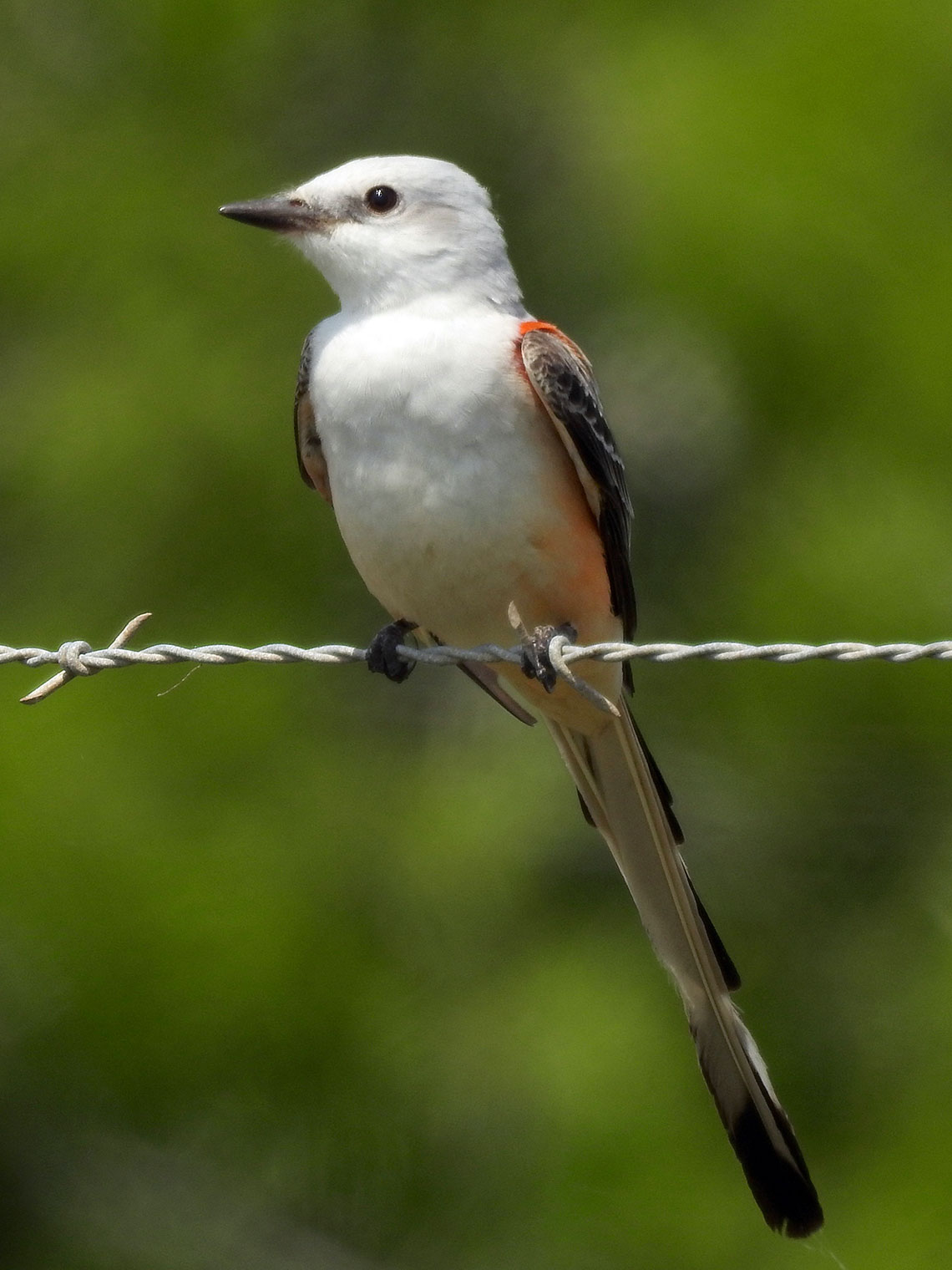
Most of the migration is still ahead of us, and we are looking forward to seeing what this season on the coast will bring.
Running Tally
| Number of Captures | 284 |
|---|---|
| Number of Species Captured | 35 |
| Number of Ticks Collected | 64 |
| Number of Species Seen | 155 |
Mad Island: Season 5 Commences
The 5th season of spring migration banding has commenced at the Clive Runnell's Mad Island Marsh Preserve. Set up is complete and the first week of banding is coming to a close. This season's crew consists of Kristen Oliver, hailing from South Carolina, returnee Danielle Aube, and our fearless leader, Tim Guida.
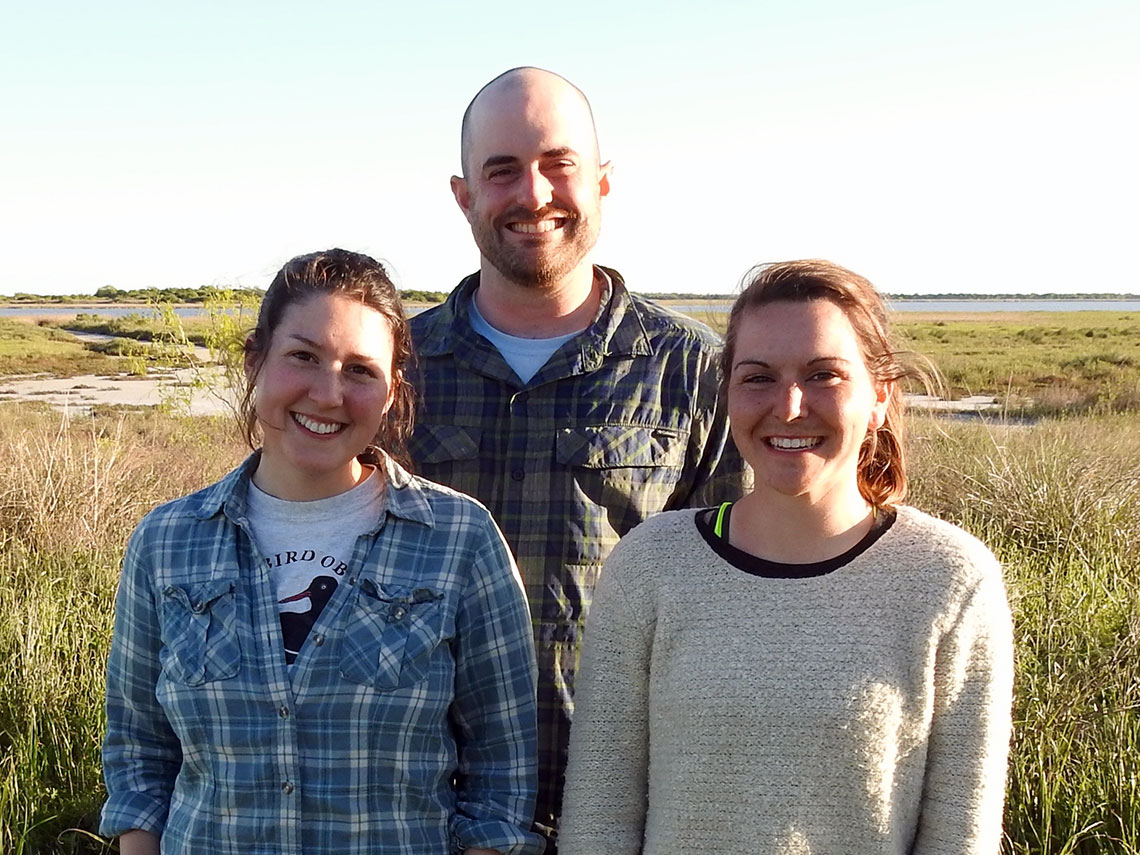
Set up this year was a breeze, thanks to great volunteers here at Mad Island clearing all the net lanes for us. Once vegetation was cleared away, net poles were erected and nets strung up.
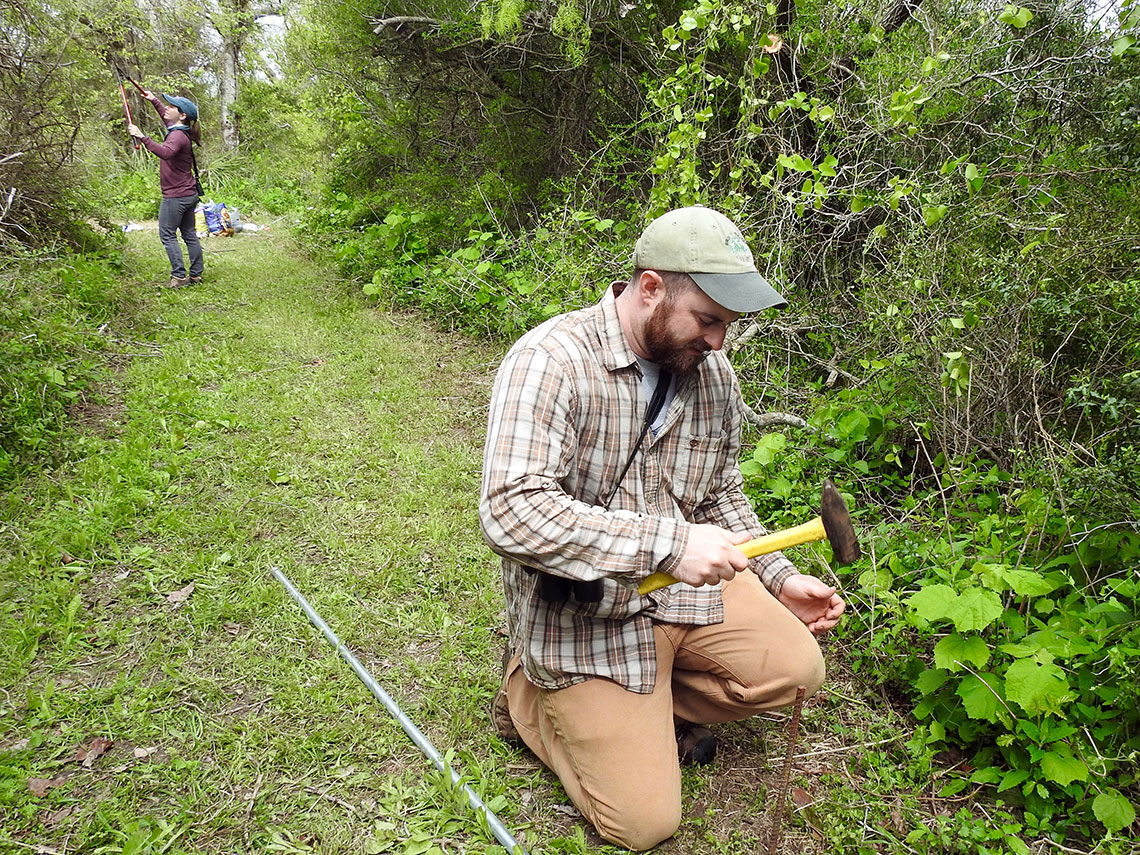
While we set up nets, Mad Island preserve manager, Steven Goertz, was kind enough to help relocate a bee hive that was a little to close to a few of our nets. He donned his brand new bee suit and moved the beehive a safe distance away from any nets and captured birds.
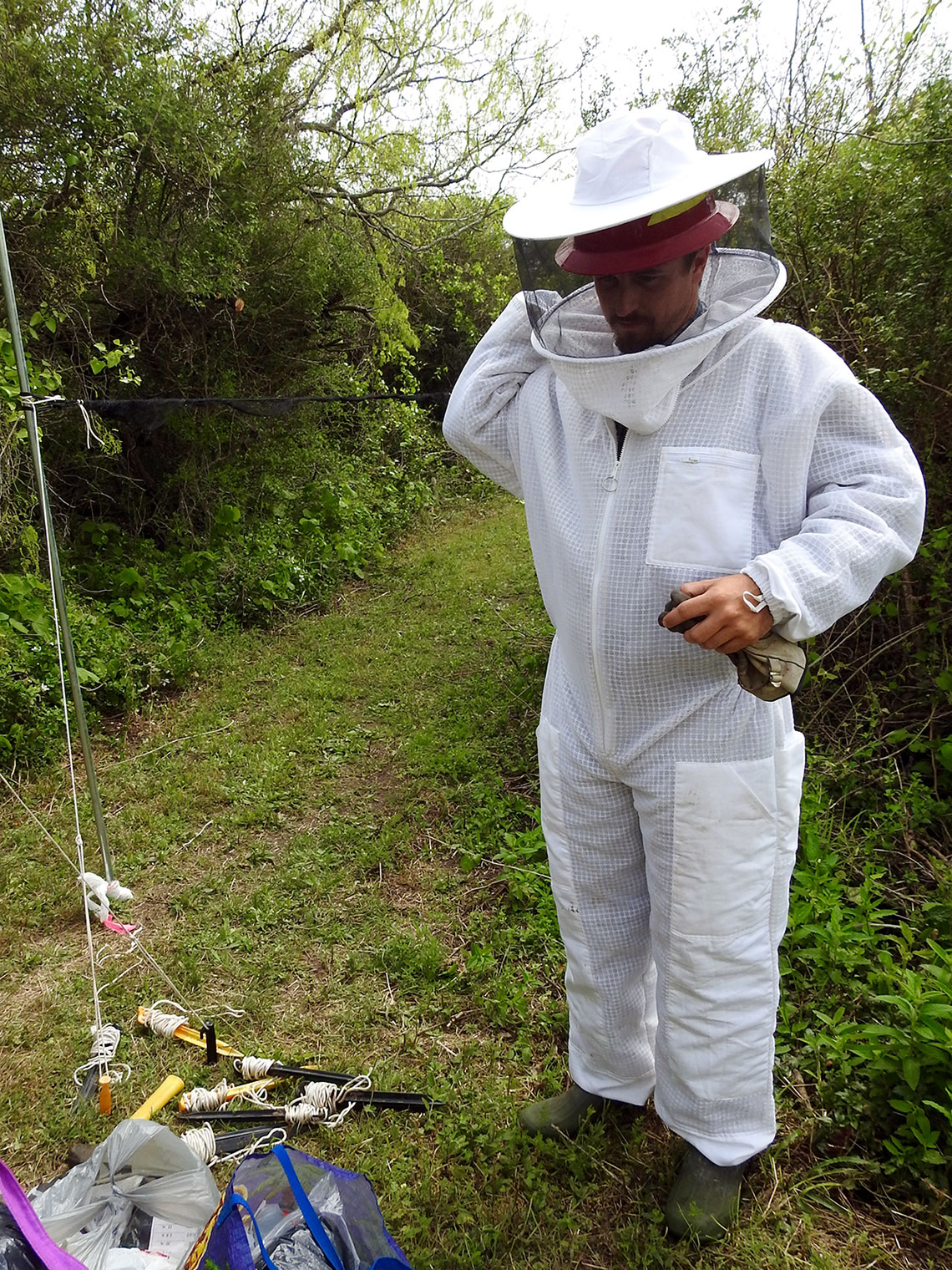
The first day we opened our nets this year was March 16. Despite some windy days, we've started to catch the first bits of migration. Most of the birds we have captured so far are wintering birds, which will soon be starting their migration father north to breed. These birds include Lincoln's sparrows, orange-crowned warblers, and yellow-rumped warblers.
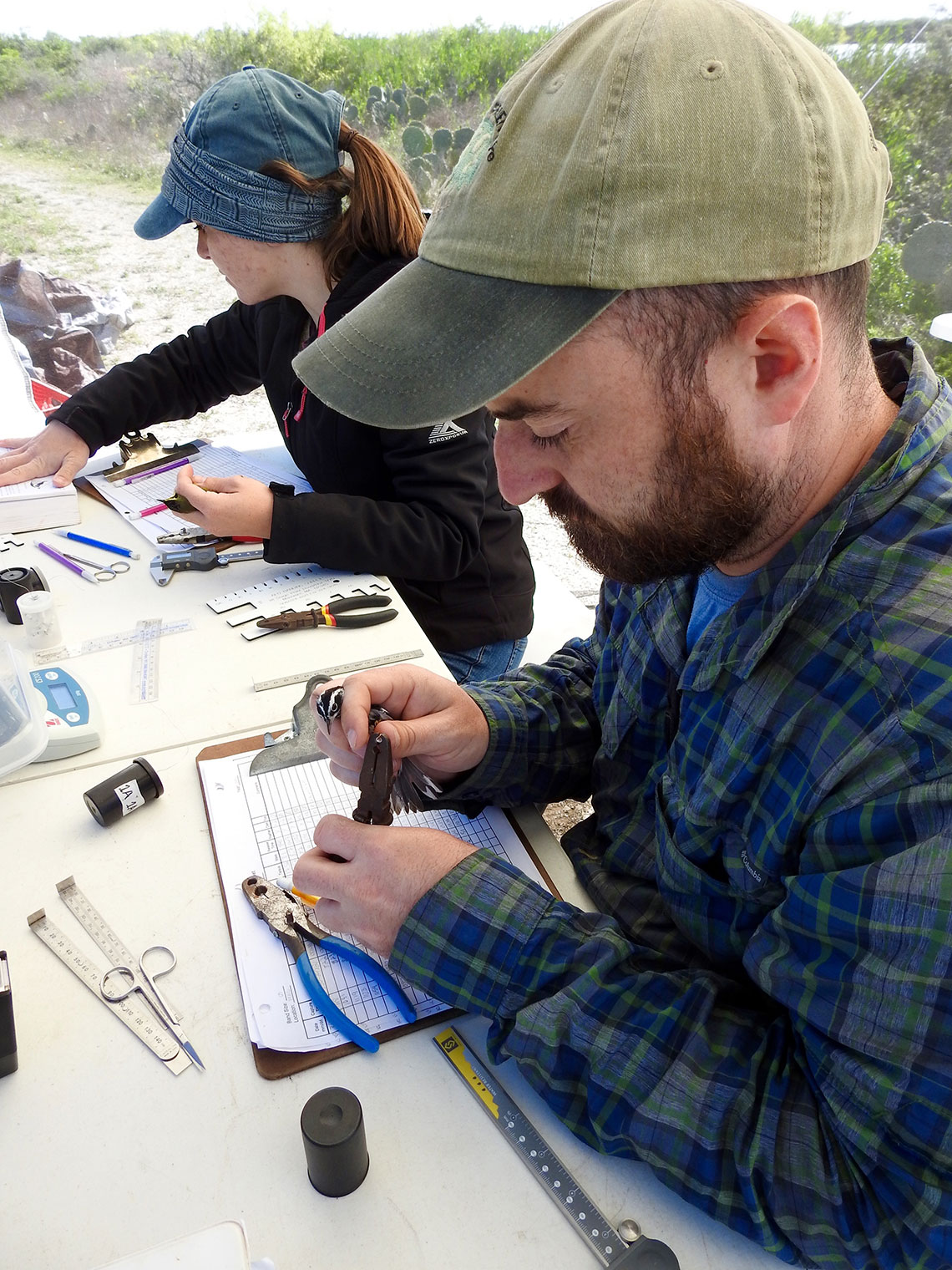
We have also begun capturing the first few long distance migrants, who have flown all the way across the Gulf of Mexico from their wintering grounds in Central and South America. Among these are black-and-white warbler, northern parula, hooded warbler, and a female ruby-throated hummingbird.
Running Tally
| Birds Captured | 87 |
|---|---|
| Species Captured | 20 |
| Species Observed | 128 |
| Ticks Collected | 27 |

